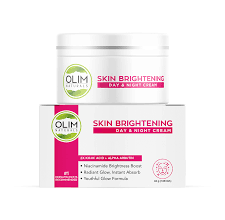How to Choose the Best Hydroquinone Cream for Melasma

Melasma, a common skin condition characterized by dark, discolored patches on the skin, can be particularly distressing for those who suffer from it. Fortunately, hydroquinone cream is one of the most effective treatments available. However, with numerous options on the market, selecting the best hydroquinone cream for melasma can be challenging. This comprehensive guide will help you make an informed decision.
Understanding Hydroquinone and Its Benefits
Hydroquinone is a skin-lightening agent that works by decreasing the formation of melanin in the skin. Melanin is the pigment responsible for skin color, and excessive melanin production leads to conditions like melasma. By inhibiting the production of melanin, hydroquinone can help lighten the dark patches and even out skin tone.
Key Benefits of Hydroquinone:
- Effective Lightening: Hydroquinone is clinically proven to reduce the appearance of dark spots and hyperpigmentation.
- Versatile Use: It can be used on various parts of the body, including the face, neck, and hands.
- Combination Therapy: Often used in conjunction with other treatments like retinoids and corticosteroids for enhanced results.
Factors to Consider When Choosing a Hydroquinone Cream
1. Concentration of Hydroquinone
Hydroquinone creams are available in different concentrations, typically ranging from 2% to 4%. Over-the-counter (OTC) products usually contain 2% hydroquinone, while prescription-strength creams can contain 4% or higher. For mild melasma, an OTC product may be sufficient. However, for more severe cases, a higher concentration prescribed by a dermatologist may be necessary.
2. Ingredients and Formulation
Look for a hydroquinone cream that contains additional beneficial ingredients such as:
- Retinoids: Enhance skin cell turnover and improve the penetration of hydroquinone.
- Vitamin C: Provides antioxidant protection and further aids in skin brightening.
- Kojic Acid: Another effective skin-lightening agent that works well with hydroquinone.
- Sunscreen: Essential for protecting the skin from UV rays, which can exacerbate melasma.
3. Brand Reputation and Reviews
Choosing a product from a reputable brand with positive customer reviews is crucial. Read testimonials and reviews from other users who have similar skin concerns. This can provide insights into the cream’s effectiveness and potential side effects.
4. Skin Type Compatibility
Consider your skin type when selecting a hydroquinone cream. Some formulations are designed specifically for sensitive skin, while others may be more suitable for oily or dry skin. Look for products that are non-comedogenic, fragrance-free, and hypoallergenic if you have sensitive skin.
5. Price and Availability
While price should not be the sole factor, it’s essential to choose a product that fits within your budget. Compare prices across different brands and retailers to find the best deal. Availability is also important; ensure that the product you choose is easily accessible, whether online or in-store.
Top Hydroquinone Creams for Melasma
1. Obagi Nu-Derm Clear Fx
Obagi Nu-Derm Clear Fx is a popular choice among dermatologists and users alike. It contains 7% arbutin and 2% hydroquinone, making it effective for reducing hyperpigmentation. The formula is also enriched with antioxidants and vitamins to nourish the skin.
2. Ambi Skincare Fade Cream
Ambi Skincare Fade Cream is an affordable OTC option containing 2% hydroquinone. It also includes vitamin E and alpha hydroxy acids, which help to exfoliate the skin and improve texture. This cream is suitable for both oily and normal skin types.
3. Murad Rapid Age Spot and Pigment Lightening Serum
This serum contains 2% hydroquinone and is known for its fast-acting formula. Murad Rapid Age Spot and Pigment Lightening Serum also includes glycolic acid, which aids in exfoliation and enhances the penetration of hydroquinone. It’s a great option for those looking for quick results.
4. Meladerm
Meladerm by Civant Skincare is a hydroquinone-free alternative that uses natural ingredients such as kojic acid, bearberry extract, and licorice extract. It’s ideal for individuals who prefer a more natural approach to treating melasma. Despite being hydroquinone-free, it is highly effective in reducing hyperpigmentation.
How to Use Hydroquinone Cream Safely
Patch Test
Before using any new hydroquinone cream, it’s advisable to perform a patch test. Apply a small amount of the product to a discreet area of your skin and wait for 24 hours to check for any adverse reactions.
Application Tips
- Cleanse Your Skin: Always start with a clean face. Use a gentle cleanser to remove any dirt and oil.
- Apply Evenly: Apply a thin layer of hydroquinone cream to the affected areas. Avoid applying it to unaffected areas to prevent unnecessary lightening.
- Use Sunscreen: Hydroquinone can make your skin more sensitive to sunlight. Always apply a broad-spectrum sunscreen with at least SPF 30 during the day.
Duration of Use
Hydroquinone is generally safe for short-term use. It’s recommended to use it for no longer than 3-4 months at a time. Prolonged use can lead to ochronosis, a condition where the skin becomes dark and thickened. Consult your dermatologist before resuming treatment after a break.
Potential Side Effects
While hydroquinone is effective, it can cause side effects in some individuals. These may include:
- Skin Irritation: Redness, burning, and itching can occur, especially in sensitive skin.
- Allergic Reactions: Some people may experience allergic reactions. Discontinue use immediately if you notice severe itching, swelling, or blistering.
- Photosensitivity: Increased sensitivity to sunlight, necessitating diligent sunscreen use.
Conclusion
Choosing the best hydroquinone cream for melasma involves considering several factors such as concentration, ingredients, brand reputation, skin type compatibility, and price. By carefully evaluating these aspects, you can find a product that effectively addresses your melasma while minimizing potential side effects.



